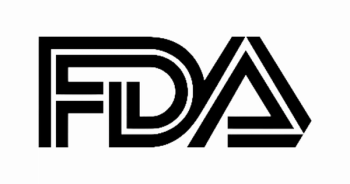
Future Direction of CD38 Antibodies in Multiple Myeloma
Adriana Rossi, MD:The addition of daratumumab to earlier and earlier lines of therapy has really changed the way we think, not only for the newly diagnosed patient, but for the relapse setting, because now patients who maybe are on their second-line of therapy may be refractory to a CD38 agent.
The field is absolutely changing. We not only have the elderly data such as the MAIA trial adding daratumumab to lenalidomide and dexamethasone, but we now have data both from the United States and Europe, namely the GRIFFIN study in the United States, looking at the addition of daratumumab to the triplet combination of lenalidomide, bortezomib, dexamethasone, which I think is our standard of care at the moment. And similarly the CASSIOPEIA study looking at bortezomib, thalidomide, and dexamethasone with the addition of daratumumab. And so using the baseline of different geographic locations, again showing a drastic benefit from the addition of a fourth drug.
Ultimately I’m not sure every patient will need a quadruplet therapy upfront. I think patient selection will ultimately need to be taken into account. We still have patients who respond well to combinations of bortezomib, cyclophosphamide, and dexamethasone, even though that’s fallen out of favor considerably. And so eventually being able to find which patient requires what therapy or will benefit mostly, tolerate best, will be very important. And not forgetting to take into account the financial toxicity of putting this many patients on quadruplet therapies, especially as our current paradigm is really for continuous therapy. And as patients have very long responses, very deep responses, it will be interesting to see how we manage all of that over time.
It’s interesting, daratumumab and isatuximab target different epitopes on CD38. And so there is a precedent in say solid tumors, where you would use 2 monoclonal antibodies on the same target. I’m not sure we need to be doing that in multiple myeloma. I think sequential use of similar entities and drugs would be maybe a little bit more advised at this time.
We now have data, as I had mentioned, with the daratumumab and bortezomib, lenalidomide, dexamethasone. There is now quite a practice in the United States of using carfilzomib, lenalidomide and dexamethasone in the frontline setting, as well in the relapse setting. And it will be interesting I think, not surprising, that the addition of a CD38 antibody will deepen that further.
We also have interesting data of the combination of CD38 antibody added just to a carfilzomib, DEX [dexamethasone] combination. Maybe our most powerful, but since so much of our data come from IMID [immunomodulatory drug]-containing regimens, having an IMID-sparing regimen, it’s interesting again for the patients who maybe are intolerant or benefit further. So patient selection will come into this. Do we need to have all 4, or can we tease out which triplet would be advisable for different patient populations?
It’s exciting to have the ICARIA-MM data, and likely this is a combination that will lead to an FDA approval, adding this to our armamentarium of drugs that will be interesting to see where it will fit, which patients exactly, and how the 2 different CD38 antibodies reach the market, both as far as reimbursement and infusion times. I think with the daratumumab many of us have moved down to a 90-minute rapid infusion based on data that have been presented. Soon we expect to have a subcutaneous formulation. So the timing, the combination, and the prior therapies will all come into play.
I think it’s a very exciting time in multiple myeloma, as it has been, I think. I’ve been saying this now for 10 years. Every year we make such strides in not only understanding more about the pathophysiology but translating that into therapies that are changing patient outcomes. CD38 will remain one of the big targets. I think not only in monoclonal antibodies, but as I mentioned, there are a few CAR T [chimeric antigen receptor T-cell] therapies coming up, both in combination with BCMA [B-cell maturation antigen], or new combinations as we come up with better and better ways of targeting myeloma.
Transcript edited for clarity.









































